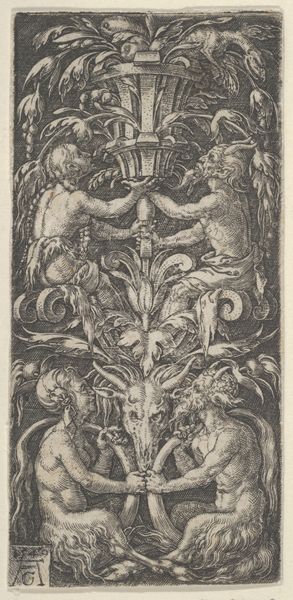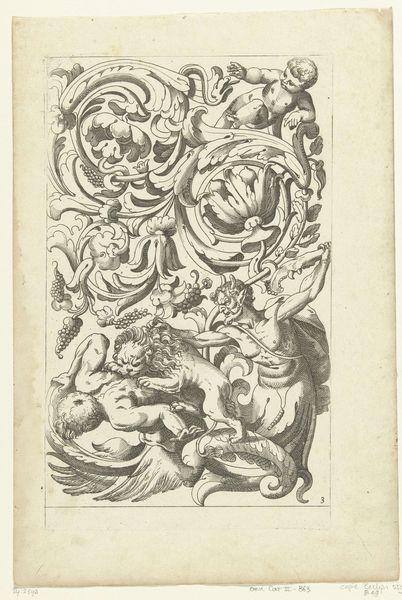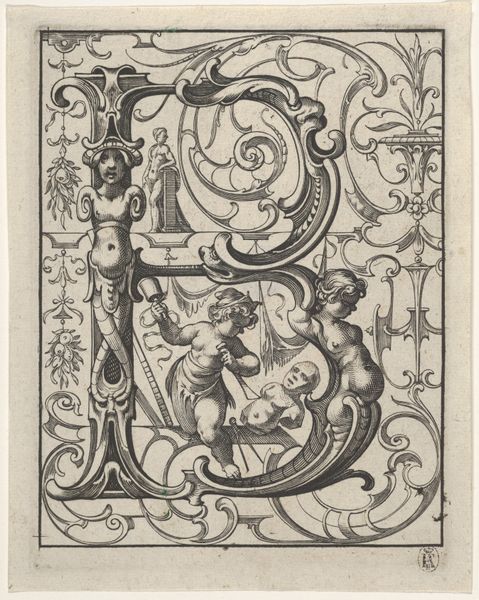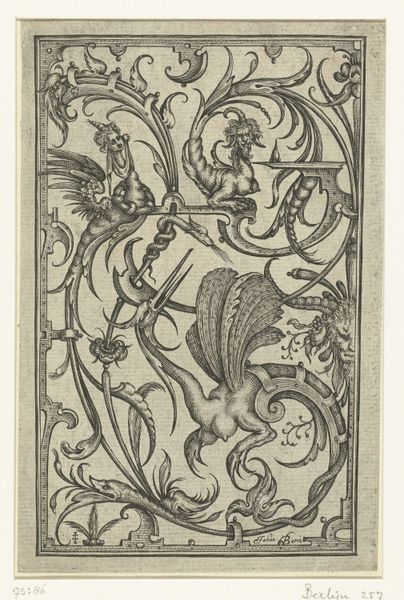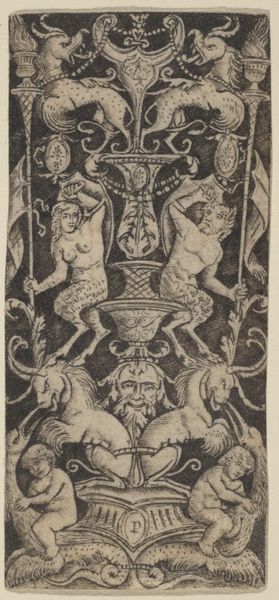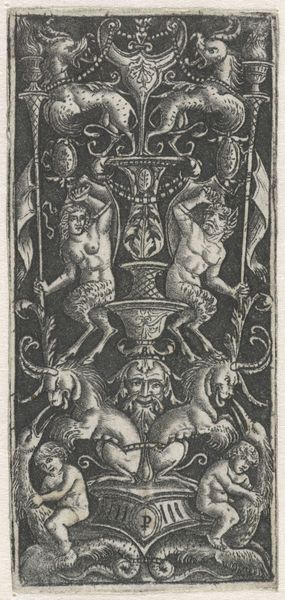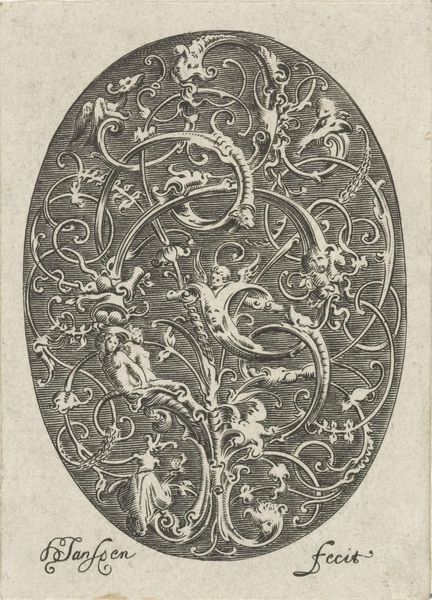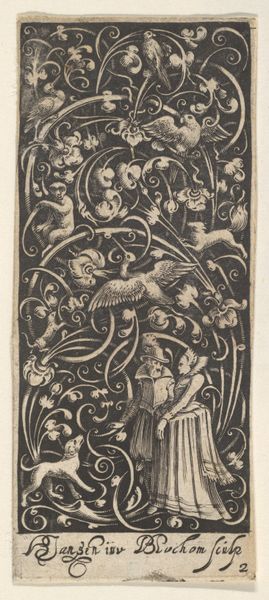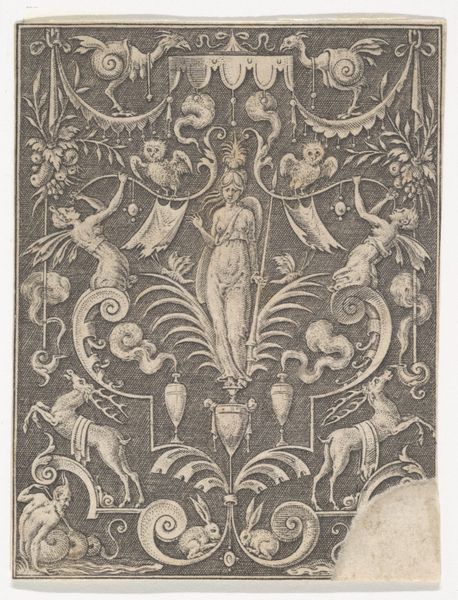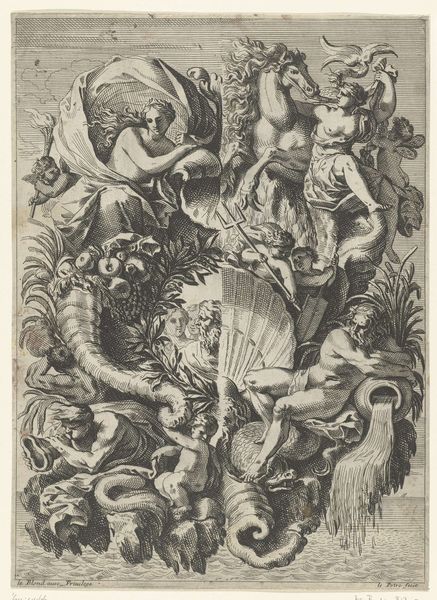
drawing, ornament, print, metal, engraving
#
drawing
#
ornament
#
allegory
#
pen drawing
# print
#
metal
#
pen illustration
#
pen sketch
#
figuration
#
11_renaissance
#
momento-mori
#
pen-ink sketch
#
line
#
pen work
#
sketchbook drawing
#
history-painting
#
engraving
#
miniature
Dimensions: height 97 mm, width 82 mm
Copyright: Rijks Museum: Open Domain
This is a small engraving called "Ornament met twee kinderen en een paardenschedel," or "Ornament with two children and a horse skull," made by the Master of the Horse Heads. The image invites us into a world where life and death intertwine. Winged infants, symbols of innocence and potential, frolic amidst ornate foliage, while a horse skull stands starkly in the center. In the context of the 16th century, such juxtapositions reflect the era's fascination with memento mori, reminders of mortality meant to provoke reflection on life's transience. Consider the social role of ornamentation during this period; it was often used to convey status and cultural refinement. But here, the artist disrupts expectations by including the crude image of the horse skull. We can interpret this through a feminist lens as a subversion of the traditional, patriarchal focus on beauty and permanence. The piece confronts us with the raw, unavoidable reality of death. The image encourages a deeper consideration of our own existence.
Comments
No comments
Be the first to comment and join the conversation on the ultimate creative platform.

